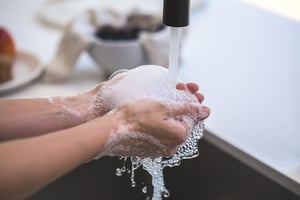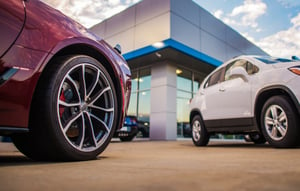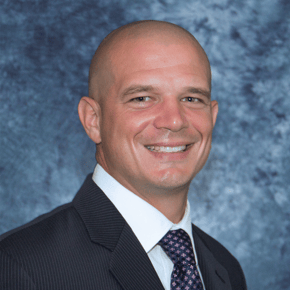
COVID-19: Workplace Safety Best Practices
Although COVID-19 is new, many of the same methods used to prevent other infectious diseases can effectively stop the spread of COVID-19.
PARTNER SPOTLIGHT
Dealer Management System, Computer Technology, Media/Advertising, Automotive Auction, F & I/Aftermarket Products, Automotive Technology Training & Compliance
 A NHADA Gold PARTNER
A NHADA Gold PARTNERComputer Technology, Automotive Shop Equipment, Environmental Services
 A NHADA Platinum PARTNER
A NHADA Platinum PARTNERF & I/Aftermarket Products, Automotive Technology Training & Compliance, Environmental Services
.png?width=150&name=corp_logo_horz_on_light_with_trademark_symbol_1200w%20(002).png) A NHADA Diamond PARTNER
A NHADA Diamond PARTNERAt this time, it is likely that every essential business has implemented a plan to help in the prevention of COVID-19, but it is our responsibilities to continually update and adapt.
When evaluating the workplace we must have a good plan of action to keep employees and customers safe.
Step 1: Eliminate the Hazard – The Remote Workplace
Step 2: Isolate People from the Hazard – Change the Way We Work
Step 3: Safety When We Must Have Contact – Take Proper Precautions
Step 4: Last Line of Defense – Personal Protective Equipment
Safe Operations Cleaning Checklist
Eliminating the Hazard – The Remote Workplace
The first line of defense against the spread of the virus is to eliminate the hazard. Welcome to the remote workplace. Set up employees whom have the capability to perform their job functions remotely to do so.
This will likely only pertain to a select few within the business, but none the less it is an important step.
Now, person to person interaction may not be able to be eliminated but the risk for customers and your employees can be minimized by creating a new work practice when taking a vehicle in for service.
It is believed the coronavirus can live in the air for up to 3 hours. A window can be created to eliminate the hazard. If the customer or business has the ability build in a 3 hour buffer before getting into the vehicle for service and a 3 hour buffer before returning the vehicle to the customer it drastically reduces or all together eliminates the risk.
This is certainly a practice that can be put into place at a collision center. Talk with the insurance carrier and let them know that you would like to build in this buffer time prior to repairing the vehicle (the clock starts when the vehicle is dropped off). Also communicate with your customer when they come to pick up their repaired vehicle that you would like to let the vehicle sit undisturbed for a minimum of 3 hours.
The buffer time does not eliminate the need to disinfect the interior surfaces as findings from the “New England Journal of Medicine” state the virus can live on cardboard for up to 24 hours and on plastic for 2-3 days.
Isolate People from the Hazard – Change the Way We Work
The focus of isolating people from the hazard means we must isolate people from each other.
|
Workstation Examples |
Customer Traffic & Waiting Areas |
Eliminate Sharing |
|
|
|
Safety When We Must Have Contact – Take Proper Precautions
It will be impossible to eliminate the hazard completely as technicians will still need to handle keys and get in customers vehicles, so a process and measures must be put in place to protect all parties involved.
|
Service Writer |
Technician |
Customer |
|
|
|
Last Line of Defense – Personal Protective Equipment (PPE)
The very last line of defense against the virus is the use of personal protective equipment (PPE). These items include nitrile gloves, masks, goggles, etc. The most at-risk employees should receive these items if available. It is also important they are used properly.
Nitrile glove use has never been higher by employees. The gloves are only effective if they are used properly.
Other Best Practices
Another best practice for all businesses to implement is a mandatory hand-washing time. Employees can be notified via the speaker system, text or email.
A cleaning checklist for each department is also something that will help keep a safe work environment and serve as communication. If the facility has a cleaning company this should be communicated and shared with them as well.
When determining how often to clean and disinfect proper judgment must be illustrated. Although anytime customers come in contact with a surface that specific surface should be disinfected. It is best to air on the side of overkill and scale down your process as you see fit.
A deep cleanse of the business should take place at the end of each work day whether that be by an outside company or employees.
Safe Operations Cleaning Checklist
Show us what you’ve done
We encourage you to share with with us the measures you have put in place by posting sharing your content here.
You can stay up to date on all COVID-19 related issues at https://www.nhada.com/covid19.
Please feel free to contact NHADA with any questions or concerns as we all navigate our way through this pandemic.


















.png?width=150&name=Ally_Final%20Logos%20and%20Pairings_11.14.2018-01%20(2).png)


-2.png?width=150&name=Wipfli%20Logo%20Blue%20RGB%20(1)-2.png)


.jpg?width=150&name=NHADA_Partner_FTR_Img_NHADA_Insurance%20(1).jpg)


.jpg?width=150&name=NHADA_Partner_FTR_Img_JMA(1).jpg)


